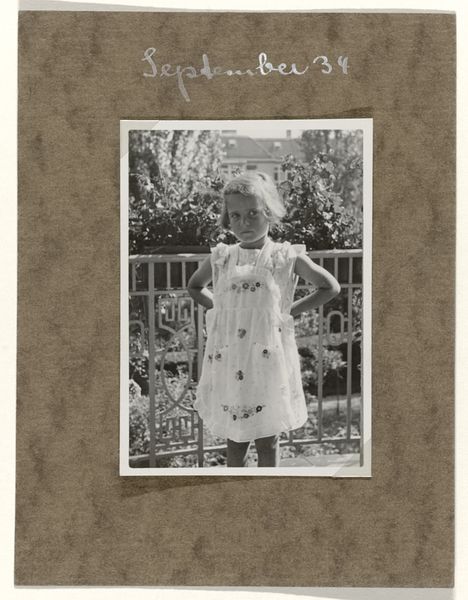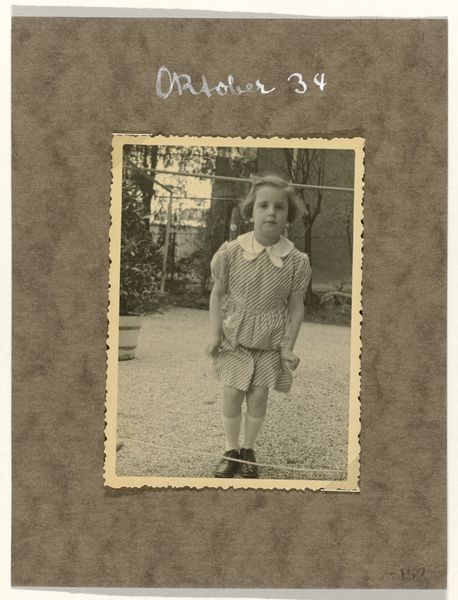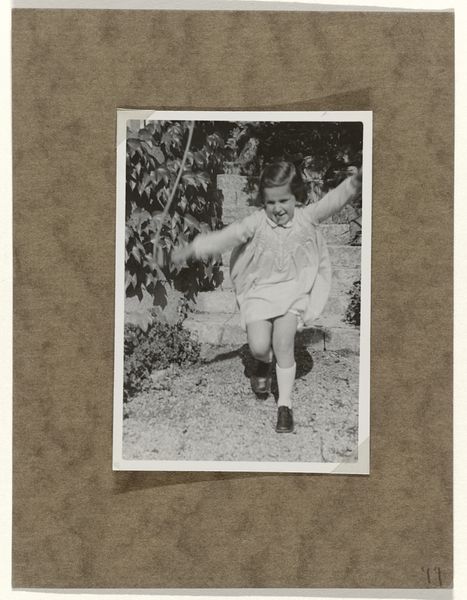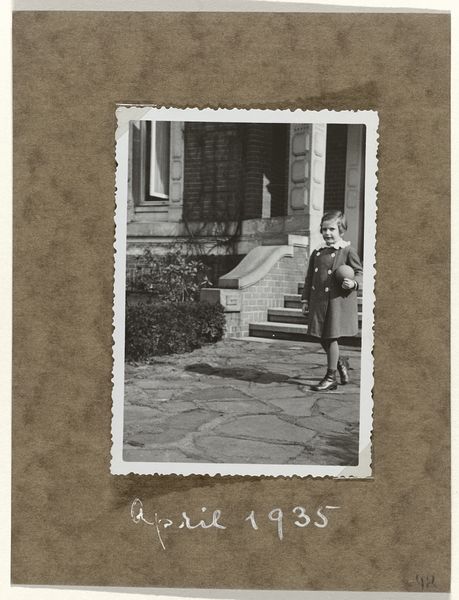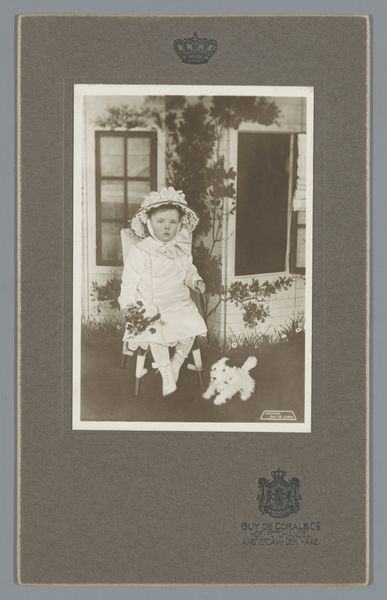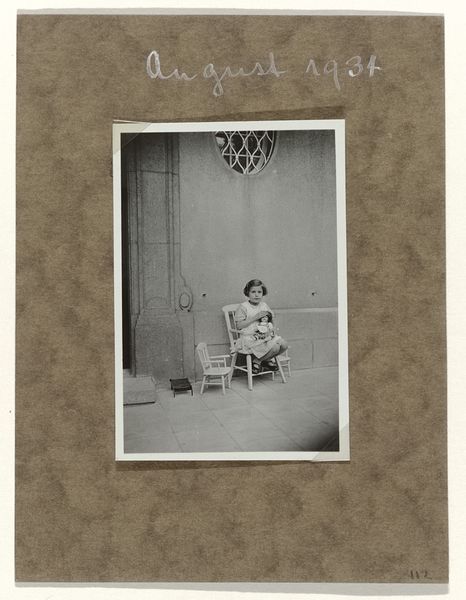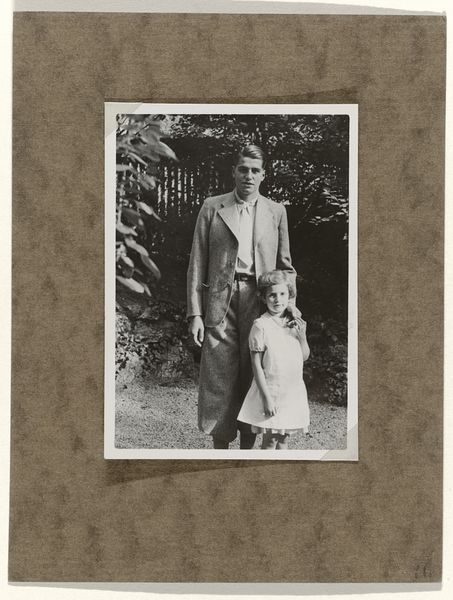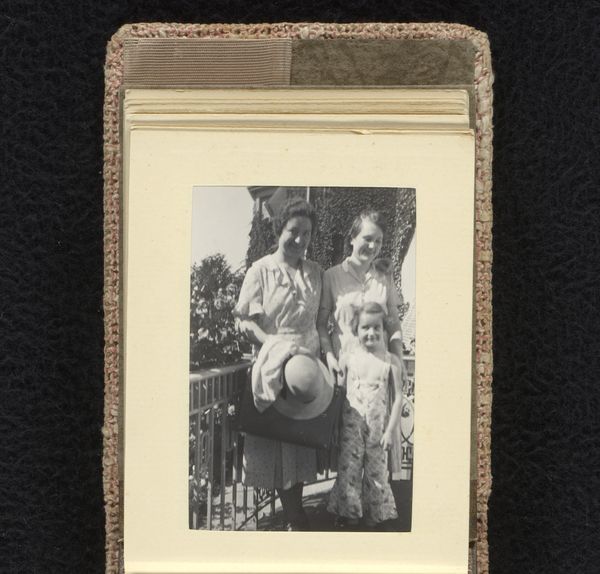
#
photo of handprinted image
#
aged paper
#
muted colour palette
#
photo restoration
#
ink paper printed
#
old engraving style
#
white palette
#
archive photography
#
historical fashion
#
ink colored
Dimensions: height 90 mm, width 65 mm
Copyright: Rijks Museum: Open Domain
Curator: The work before us is an image titled "Isabel Wachenheimer outside by a stone staircase, in Stuttgart October 1934." Editor: Oh, the texture alone draws me in! It looks like an old postcard found tucked away in a family album. I can almost smell that vintage paper. And that little girl mid-skip—bursting with untarnished joy. It’s poignant, wouldn't you say? Curator: Indeed. Beyond its immediate visual charm, this photograph provides a compelling lens into a fraught historical moment, particularly through the identity of its subject and the date it was captured. It's crucial to recognize the rising tides of oppression in 1934 Germany, particularly against Jewish people, and to consider what this seemingly simple image might represent about childhood innocence and the looming shadow of the Holocaust. Editor: You know, it's the act of play on those steps that sticks with me. I picture her humming a little tune, totally oblivious. What does childhood innocence look like right before everything changes forever? Gut-wrenching. And then the foliage climbing the side—it has a sort of melancholic beauty too. Like life itself is growing wild, pushing onward no matter what… Curator: Absolutely. Thinking about the socio-political landscape helps us to re-interpret the symbolism present in this photograph, considering that there's no casual image, and it allows us to investigate and address complex social issues like historical trauma and forced migration. This particular image could symbolize themes of displacement, memory, and identity during World War II, while subtly hinting at themes of resistance. Editor: What do you think the photographer was going for, framing her in this way? Maybe there was something so special they were trying to hold onto... almost like they knew that carefree joy was destined to disappear. Curator: This resonates strongly when thinking about portraiture within vulnerable communities. It humanizes the people behind the facts. Editor: Looking at it again, this photograph makes me want to reach out and rewrite history for that kid on the steps. I wish I could promise her that she gets to keep skipping carefree. Curator: It serves as a somber reflection and calls to remember history to never repeat it. Editor: I’m grateful we had the chance to remember her today, to honor those carefree moments, before the world went dark.
Comments
No comments
Be the first to comment and join the conversation on the ultimate creative platform.
